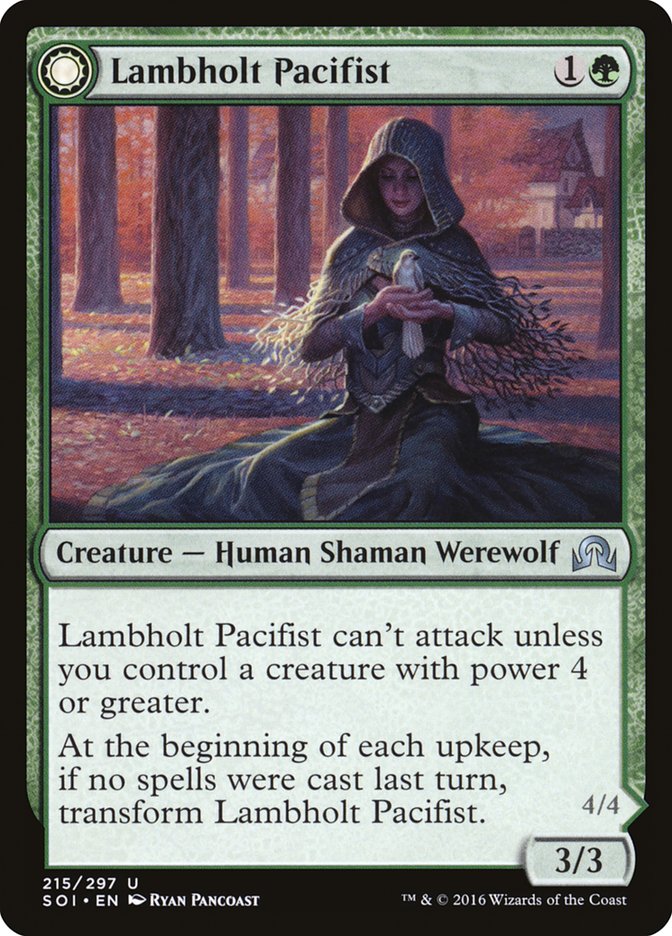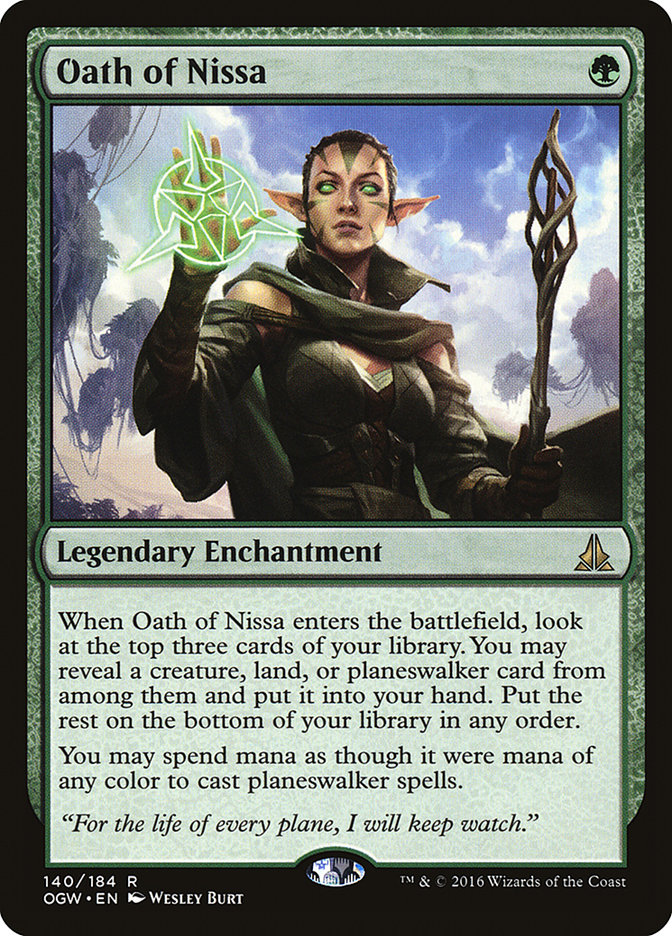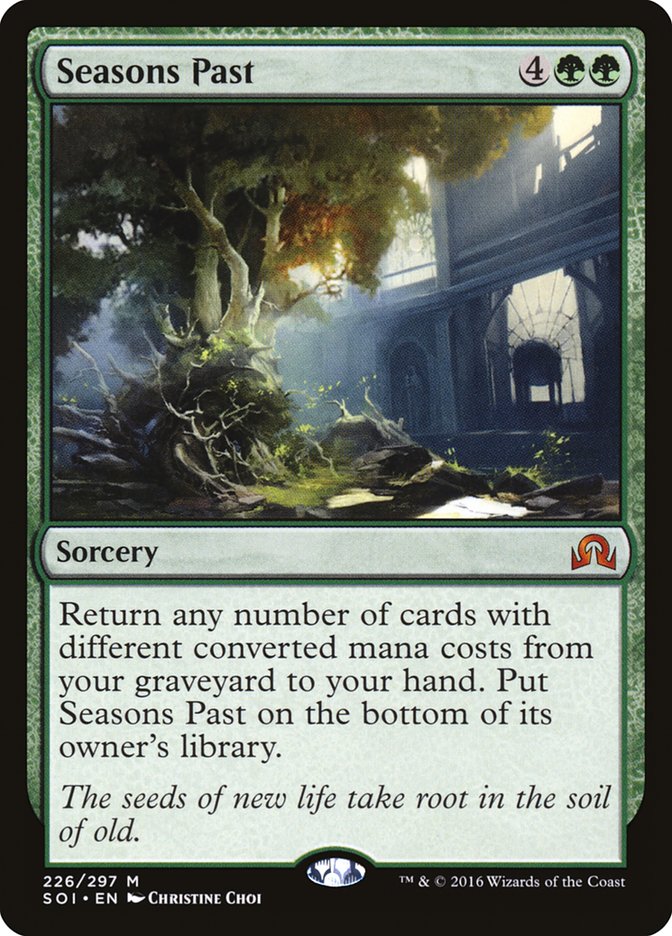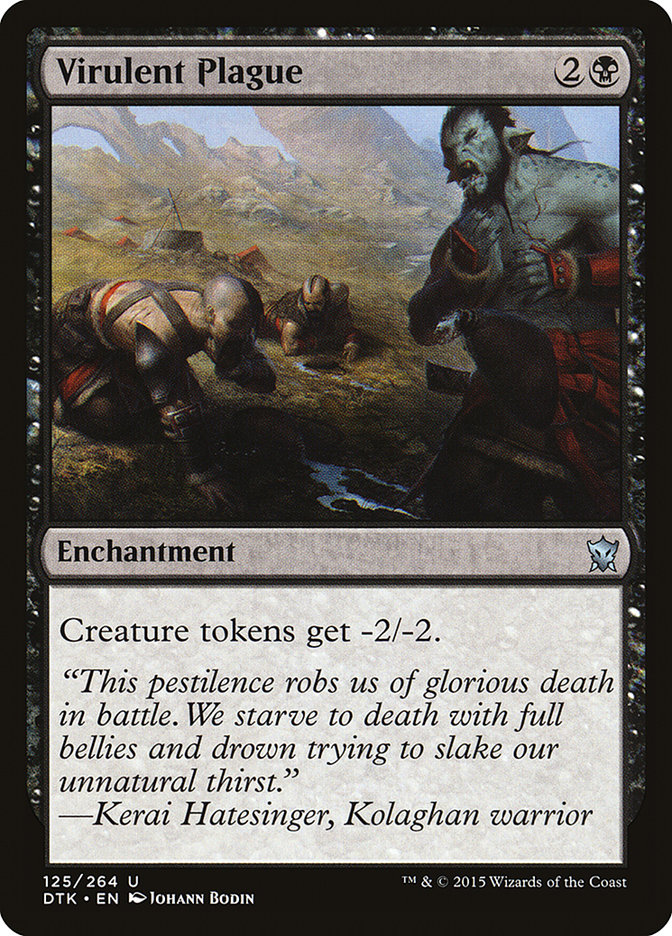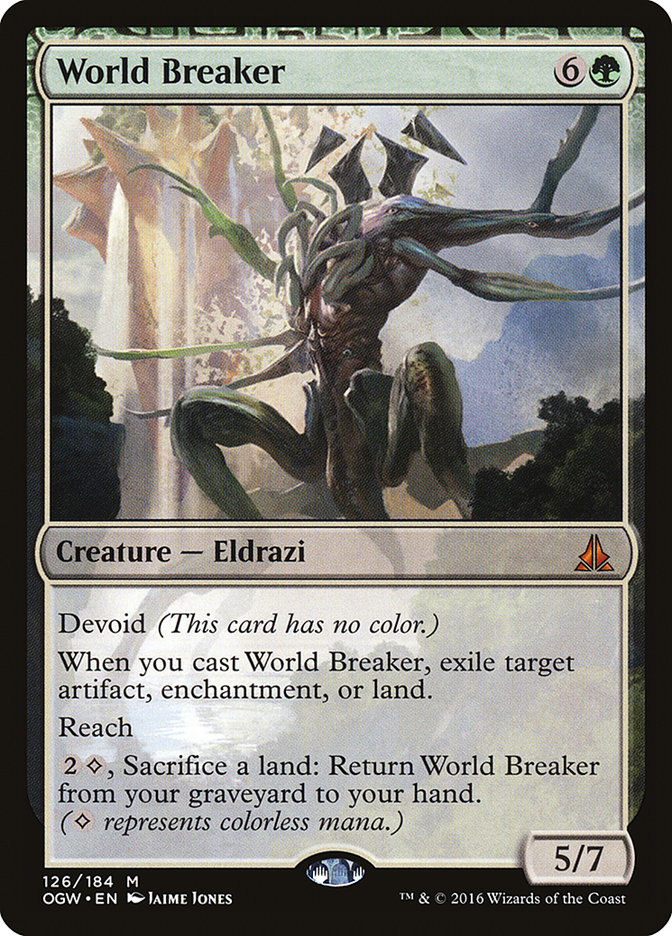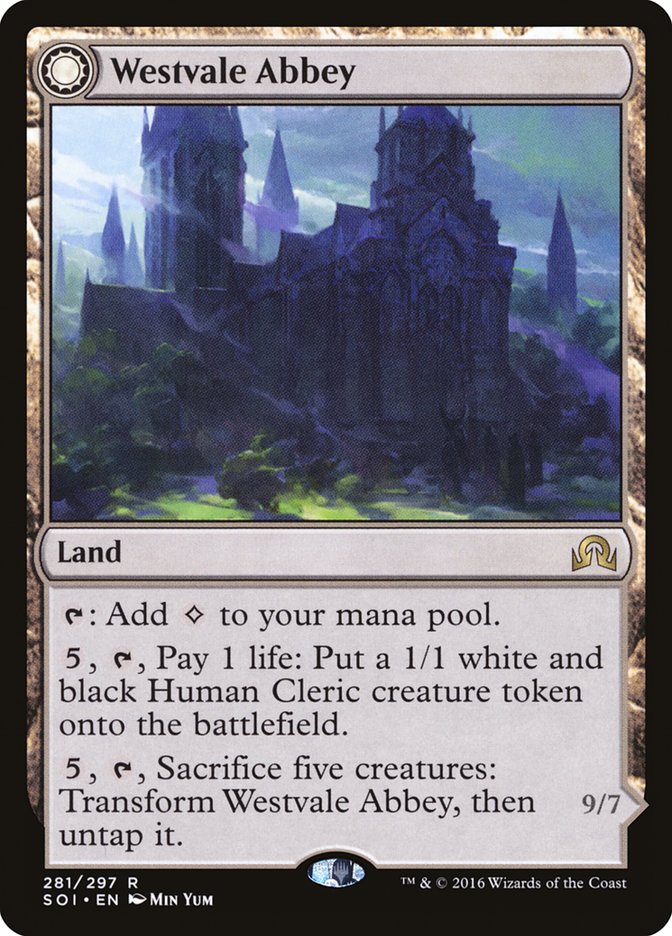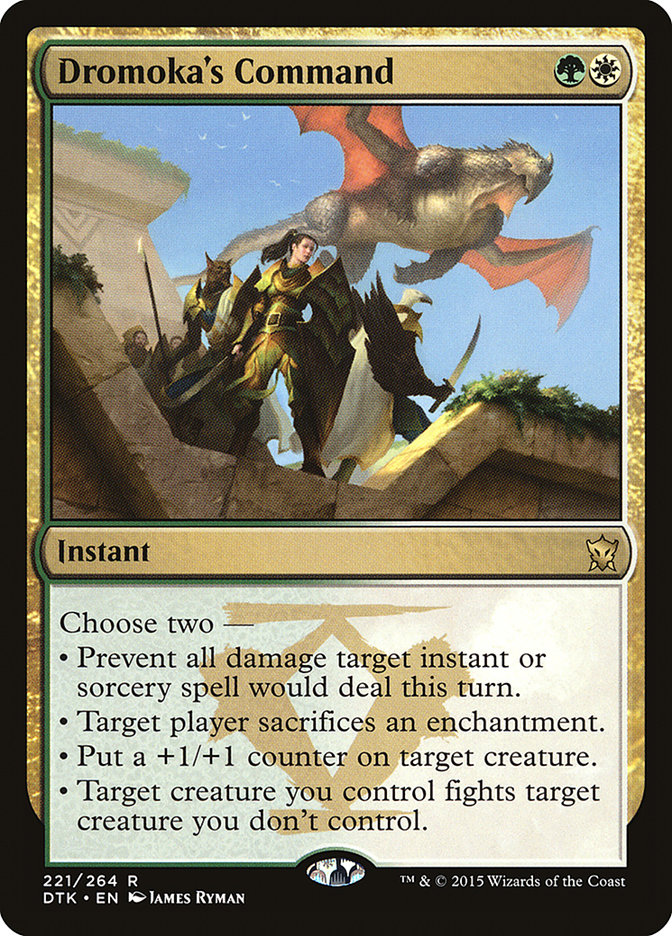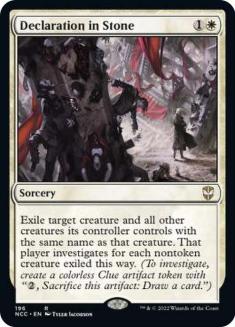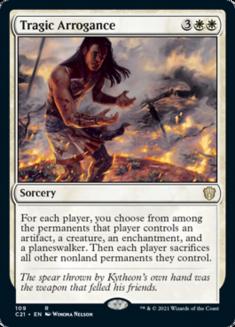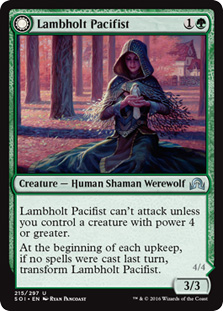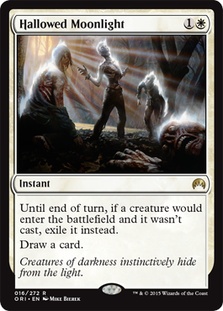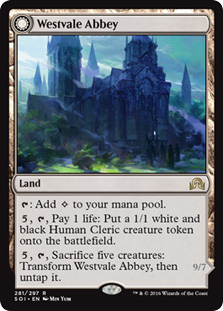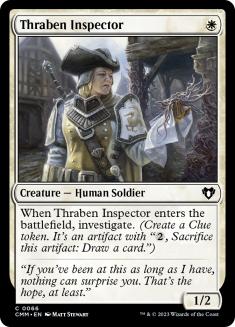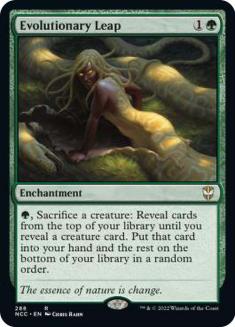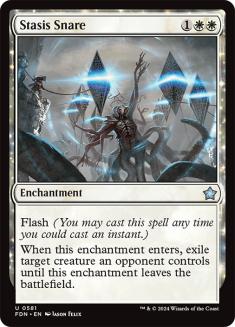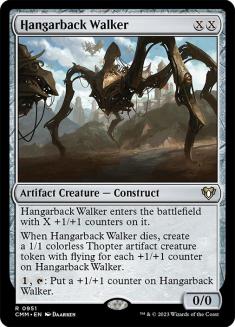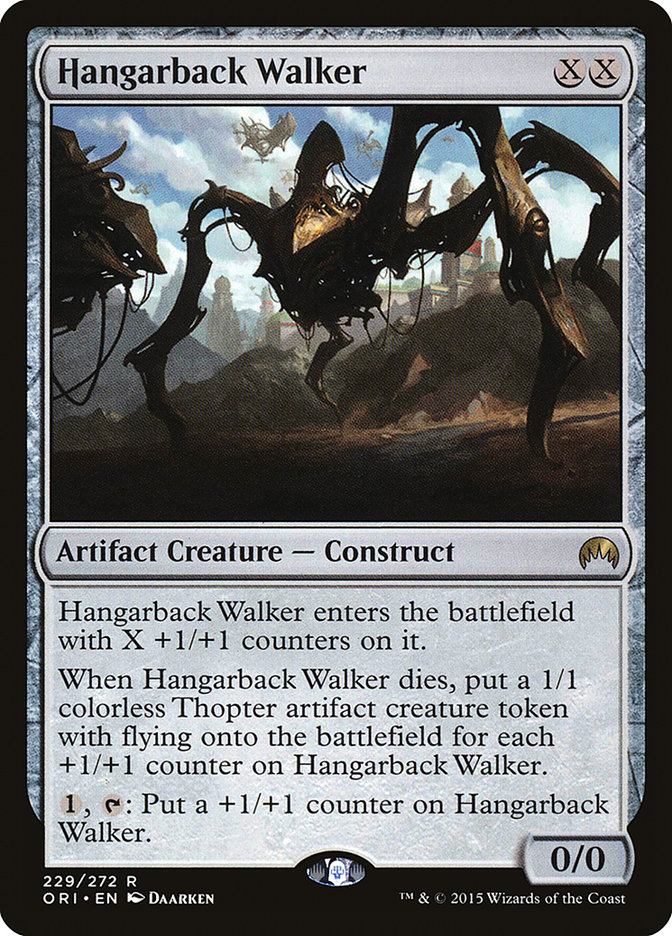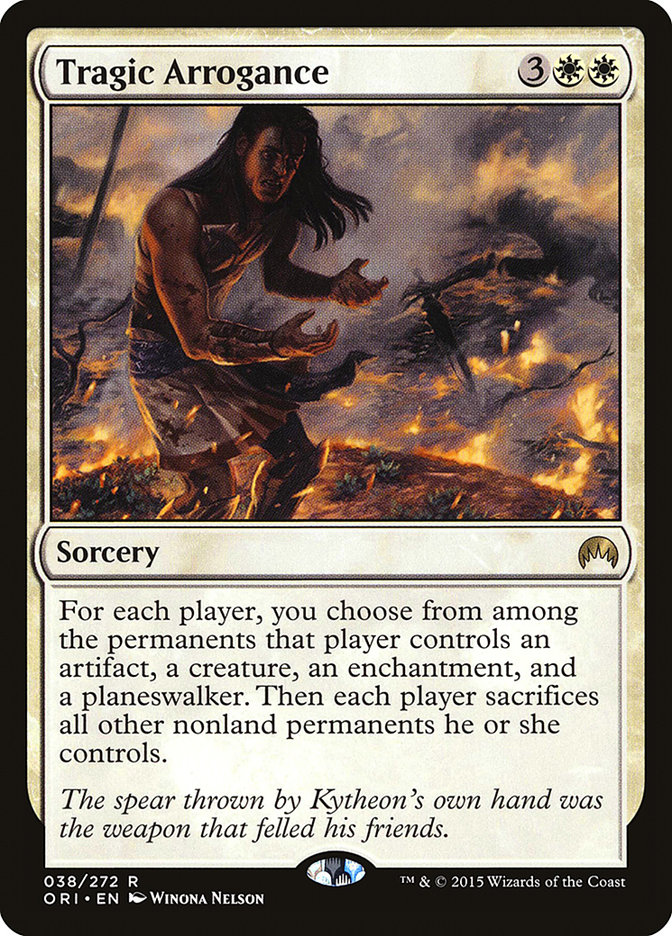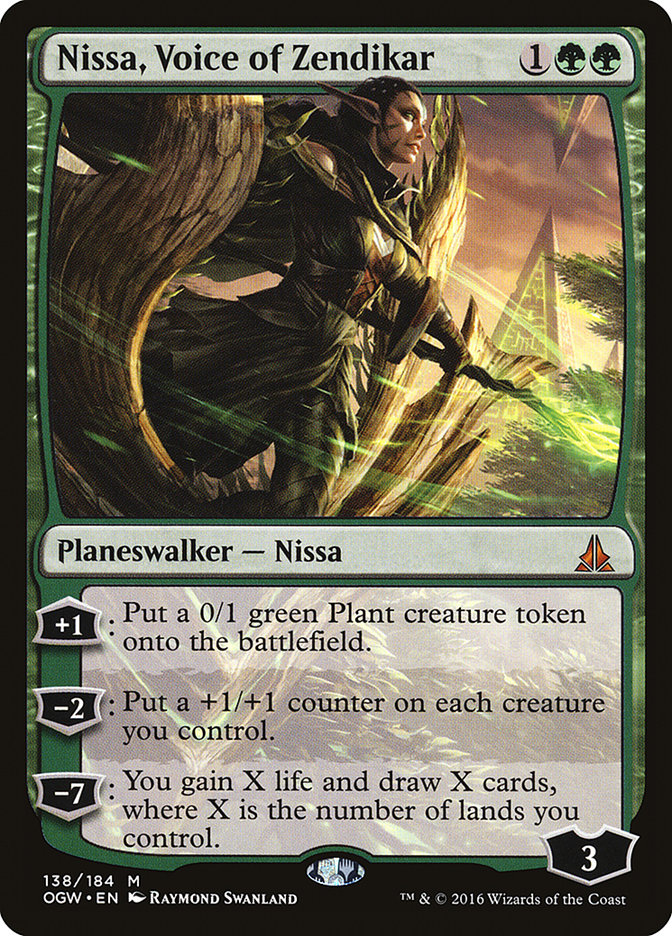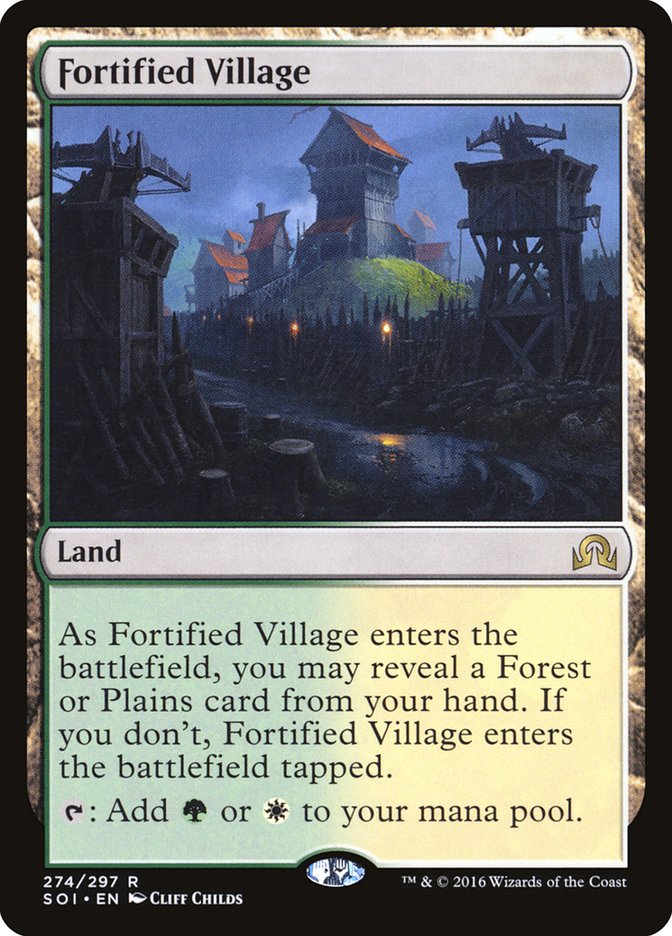Usually I wouldn’t want to discuss the same deck two weeks in a row, especially during a time when the Standard format is so diverse. However, I learned a lot this weekend about G/W Tokens during #GPToronto. I managed a 12-3 record with a slightly modified list from what I and most of Team F2F played at #PTSOI. My only losses in the tournament were to mirror matches. I played a multitude of decks throughout the event, and just like last week at the Pro Tour, I didn’t feel like I was disadvantaged in any matches.
The deck:
Creatures (14)
Planeswalkers (8)
Lands (25)
Spells (13)

The changes I made from my Pro Tour list were simply cutting two Thraben Inspectors for a Declaration in Stone and a fourth Oath of Nissa. I really liked these changes and in the future will eliminate Thraben Inspector from my deck entirely, as it was mainly a nod to Humans decks, which are falling out of favor.
Lambholt Pacifist was great. I sideboarded in Pacifist in a ton of matches, merely swapping them for the maindeck Thraben Inspectors. It provides a big-bodied blocker against Bant Company and Humans, while having the ability to pressure planeswalkers in the mirror. My sideboard changed a few cards from the Pro Tour, such as the addition of World Breaker and a third Westvale Abbey. World Breaker was for Seasons Pasts decks similar to what Jon Finkel played at the Pro Tour, granting us a recurring threat and a way to exile Virulent Plague so it could not be returned with Seasons Past.
I only got to play against Seasons Past once. I did draw World Breaker but it didn’t have much of an impact, as my opponent struggled with planeswalkers early in the game, and by the time World Breaker was able to make an appearance, the game was well in hand. I will definitely remove World Breaker from the sideboard as I don’t think Seasons Past is well-positioned in the current metagame, so having a mediocre sideboard card against an unpopular deck isn’t worth the slot.
Westvale Abbey in the sideboard was a way to get a 26th land in my deck after sideboarding in higher-curve cards such as Secure the Wastes; Tragic Arrogance; Linvala, the Preserver; and World Breaker.
Westvale Abbey is also one of your best cards against decks like R/G Goggles Ramp because they have no ways to outright kill it unless they decide to add Clip Wings to their sideboard. Generally you can comfortably move all-in on flipping Westvale Abbey and take the game from there.
Hallowed Moonlight was also a new addition because of the popularity of G/W Tokens mirrors and a variety of Collected Company decks. At one point I looked to my left and right, and three matches deep on both sides were G/W Tokens mirrors as I was also playing one myself. Hallowed Moonlight does come in against all the Collected Company decks, but also it gives us a “counterspell” for Secure the Wastes in the mirror match, a card that has the ability to win mirror games out of nowhere. Hallowed Moonlight in multiples can clog up your hand, so I would recommend only one, as savvy opponents play around it whether you have it or not, so it can be difficult to “get” a good Collected Company player with it.
The Mirror
I wanted to talk about the mirror match some because I got a ton of questions about how to approach the matchup, from both players at the Grand Prix and other interested parties.
I struggled in mirror matches this weekend and couldn’t quite get a grasp on what I was doing wrong. In retrospect, I don’t think I did much wrong but was just always short one or two big spells, such as Archangel Avacyn or Gideon, Ally of Zendikar, when my opponent had them, or I simply didn’t draw functional mana early in the game.
The mirror is very much about tempo early. Gideon, Ally of Zendikar is the card the start and middle of the game revolves around. Playing in a manner to keep Gideon on the table so your opponent can’t keep their own Gideon on the battlefield while also managing your opponent’s Archangel Avacyn is how I would approach the matchup.
In one of my matches, in Game 3 I had the option of casting a Dromoka’s Command to kill an opposing Knight Ally token and attack and kill my opponent’s Gideon, Ally of Zendikar. I chose instead to attack the Gideon with Sylvan Advocate, which was a 3/4 because of a previous Dromoka’s Command, and after my opponent chumped with the Knight token, I followed up with a Gideon of my own, allowing me to cast both a Nissa, Voice of Zendikar and a Dromoka’s Command the following turn.
This would normally lead to me being able to kill my opponent’s planeswalker the following turn, but the major issue was my opponent was able to cast both Declaration in Stone and a Dromoka’s Command of his own to kill both of my blockers and then attack my Gideon, Ally of Zendikar, leaving me with nothing on the battlefield and my opponent with the Gideon advantage. I learned from this match that, if I have the opportunity to kill Gideon in this spot, I should absolutely take it.
As for sideboarding in this matchup, I talked some with both Steve Rubin and Brian Braun-Duin about how we should approach the mirror, as G/W Tokens was swarming the top tables. We didn’t play any mirror matches in Pro Tour testing, so we wanted to figure out how we should approach the matchup in this event and in the future. The conclusion we came to was this:
In:
Out:
We felt that Hangarback Walker was a liability in games where we needed to pressure opposing planeswalkers. The games come down to planeswalker advantages, and slowly ticking up a Hangarback Walker only to have it or the Thopter tokens it creates become the victim of a Declaration in Stone wasn’t quite cutting it. Stasis Snare can be great, but once we have a couple of copies of Tragic Arrogance in our deck, it can become a liability to opposing Dromoka’s Commands if we chose to keep only Stasis Snare around, and by sacrificing any Oath of Nissa we had kicking around, we leave ourselves vulnerable.
Thraben Inspectors were truly awful the entire event. I sideboarded them out in close to, if not 100% of my rounds. These were an easy cut and upgrade to Lambholt Pacifists, giving us the ability to pressure planeswalkers and outright kill a Gideon, Ally of Zendikar with the help of a Dromoka’s Command. On the draw we should also bring in Linvala, the Preserver in place of a Secure the Wastes. Linvala gives us a great opportunity to catch up from behind, which is simply more likely to occur when we are on the draw.
The Evolution
G/W Tokens is clearly a top-tier deck in Standard, and the deck I personally consider the best. After playing two major tournaments with the deck, I have learned some on how I want to approach tuning it for our current metagame. Declaration in Stone is the first card I want to discuss, as it’s a great removal spell that we played in our sideboard because of the overwhelming presence of Bant Company. Sorcery-speed removal spells can be punishing when all of your opponents creatures are entering the battlefield at instant speed.
Bant Company is by all means still a great deck, but its popularity has dwindled due to other powerful decks emerging. I think right now is the time to add some more Declaration in Stones to the maindeck. As I stated before, Thraben Inspector is simply underwhelming. The body doesn’t line up very well in the format anymore because of a downtick in the popularity of Humans, so it’s time to send Thraben Inspector packing in place of Lambholt Pacifist, which over-performed in mirrors. I thought it was going to be pretty mediocre, but every time an opponent played Lambholt Pacifist against me on turn 2, I realized how easily one Dromoka’s Command could disrupt my entire gameplan.
With the popularity of various Cryptolith Rite decks on the rise, I think it’s time to adjust the sideboard accordingly. This is a matchup I’m still entirely unsure about. I played against it twice in the Grand Prix, winning both times. My teammates also reported they won most if not all of their matches against this deck, but I’ve heard B/G Aristocrats players also report overwhelmingly positive results.
In all likelihood this is a close matchup where the player who understands the matchup better wins more often. Personally I play this matchup to keep as many of the key creatures off the battlefield as possible and try and win with Archangel Avacyn or a flipped Westvale Abbey. Zulaport Cuthroat, Nantuko Husk, and Darkwatch Recruiter are the key to the engine of the B/G Aristocrats deck, so keeping those creatures off the battlefield is a top priority. Since this matchup is close, I’d like to add more removal to the sideboard to facilitate my plan.
Here is the list I’m going to move forward with and possibly play something close to at #GPNY.
Creatures (14)
Planeswalkers (8)
Lands (25)
Spells (13)

This version of the deck seems cleaner, and the sideboard cards all make sense to me. Having a card like Lambholt Pacifist in my sideboard felt a little off. Now I understand where I want every single sideboard card. Initially I was planning on removing Clip Wings, but with Esper Dragons taking down the Grand Prix I’d expect to see a few more Dragonlord Ojutais flying around.
One card I wanted to try but haven’t gotten the opportunity yet is Tireless Tracker. Initially it didn’t seem all that great to me because the deck is so mana-hungry that sacrificing a Clue can be a real inconvenience. That said, it feels like Tireless Tracker would be a great three-drop in the mirror, allowing us to refuel and giving us a good way to fight with Dromoka’s Command.
Tireless Tracker can also pressure planeswalkers, which is what the mirror is all about. Another potential card to fill this role would be Den Protector. Den Protector isn’t as good with Dromoka’s Command at killing opposing creatures but has the unique invasive ability that can allow us to pressure planeswalkers after we pump it up with Nissa, Voice of Zendikar and Gideon, Ally of Zendikar Emblems. It’s possible that zero Lambholt Pacifists should be in the deck moving forward and that one of these two options is better.
Tips and Tricks
G/W Tokens can be difficult to play and some small mistakes can prove very costly. Here are a few interactions and tips to learn before you pick up the deck.
Hangarback for zero with Archangel Avacyn on the battlefield:
This is a cheap and easy way to flip Archangel Avacyn to decimate your opponent’s battlefield. This is a well-known synergy of the deck but it’s still important to point it out as its one of the primary ways we can beat Humans, Bant Company, and B/G Aristocrats.
Leading with Westvale Abbey:
Sometimes we will have an opening hand with a Forest, a Westvale Abbey, a Sylvan Advocate or Lambholt Pacifist, and a Nissa, Voice of Zendikar. In this scenario we should lead with Westvale Abbey because we might draw a Fortified Village.
If we draw Fortified Village, we can now reveal the Forest we left in our hand and curve our Sylvan Advocate into a Nissa, Voice of Zendikar.
Playing with and against Tragic Arrogance:
One major interaction that comes up when playing with Tragic Arrogance is keeping as many permanents as possible while completely decimating your opponent’s battlefield. One trick is to turn Gideon, Ally of Zendikar into a creature so that you can choose it as a creature and Nissa, Voice of Zendikar as a planeswalker, allowing you to keep them both through a Tragic Arrogance.
When playing against Tragic Arrogance with both Nissa, Voice of Zendikar and Gideon, Ally of Zendikar, we can plus our Nissa the first turn we cast it while ticking it down the following two turns, allowing us to keep our more important planeswalker, Gideon, Ally of Zendikar, through an opponent’s Tragic Arrogance.
Wrapping Up
This deck is still very much a work in progress and sideboading has been the most difficult part for most players, including me. G/W Tokens has so many powerful cards that removing any pieces can be devastating to how the deck functions. For that reason it’s hard to pin down an exact sideboard until the metagame shakes out.
As I said, I usually don’t like to write about the same thing over and over but I was very excited to play with this deck this weekend and wanted to share some more of what I learned about G/W Tokens in the post-#PTSOI world. Thanks for reading!


